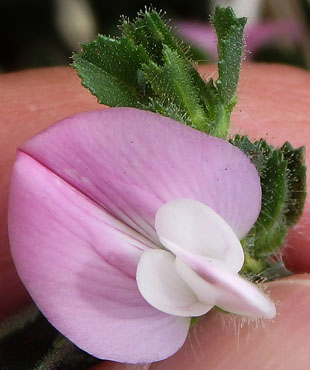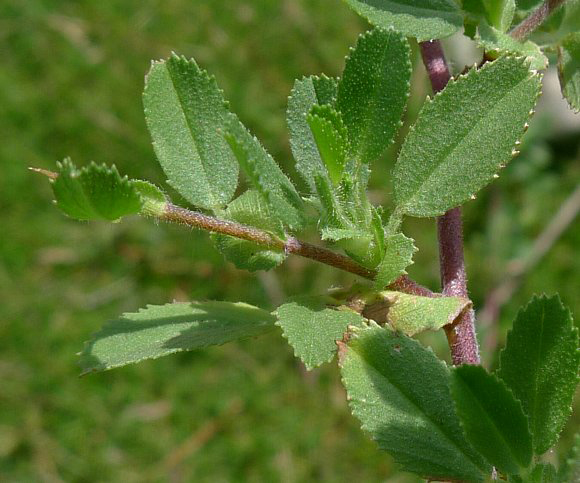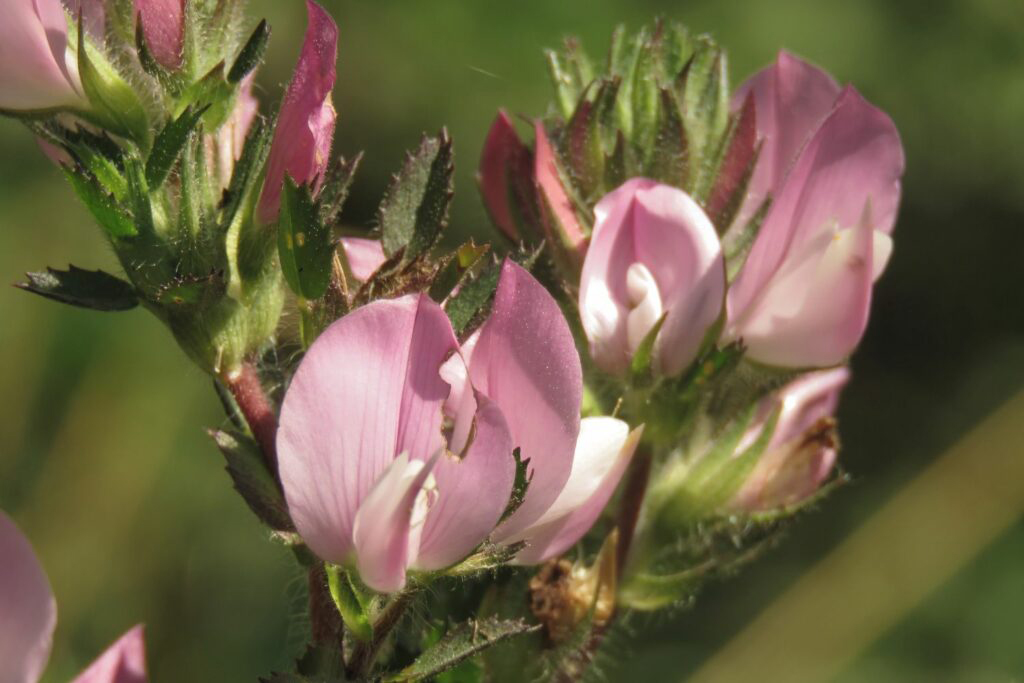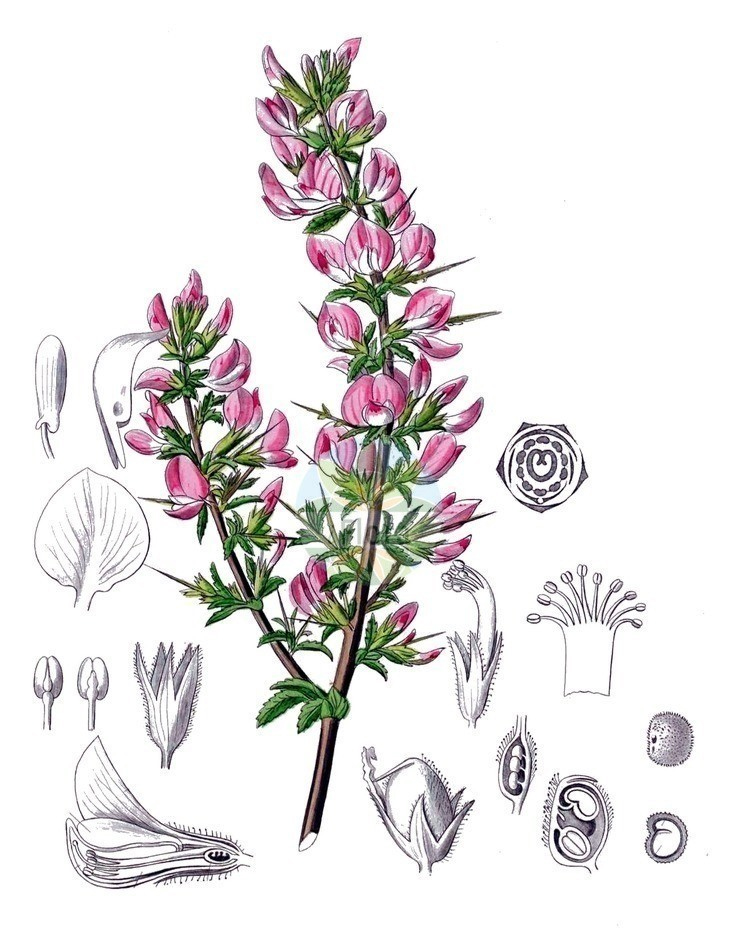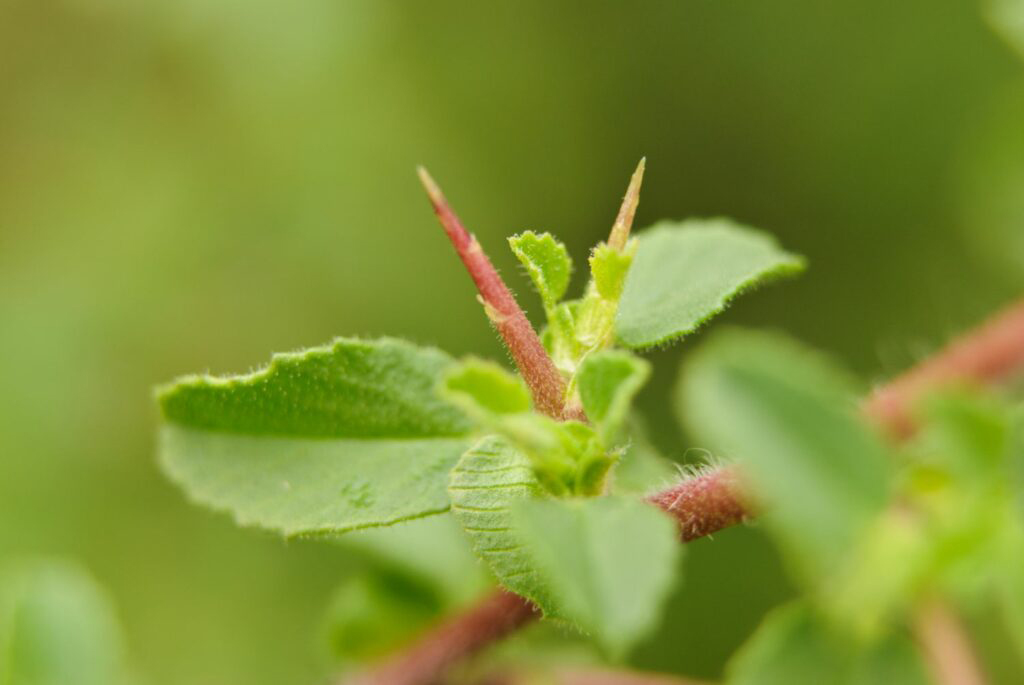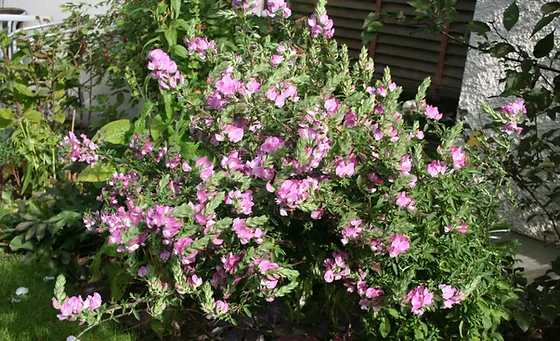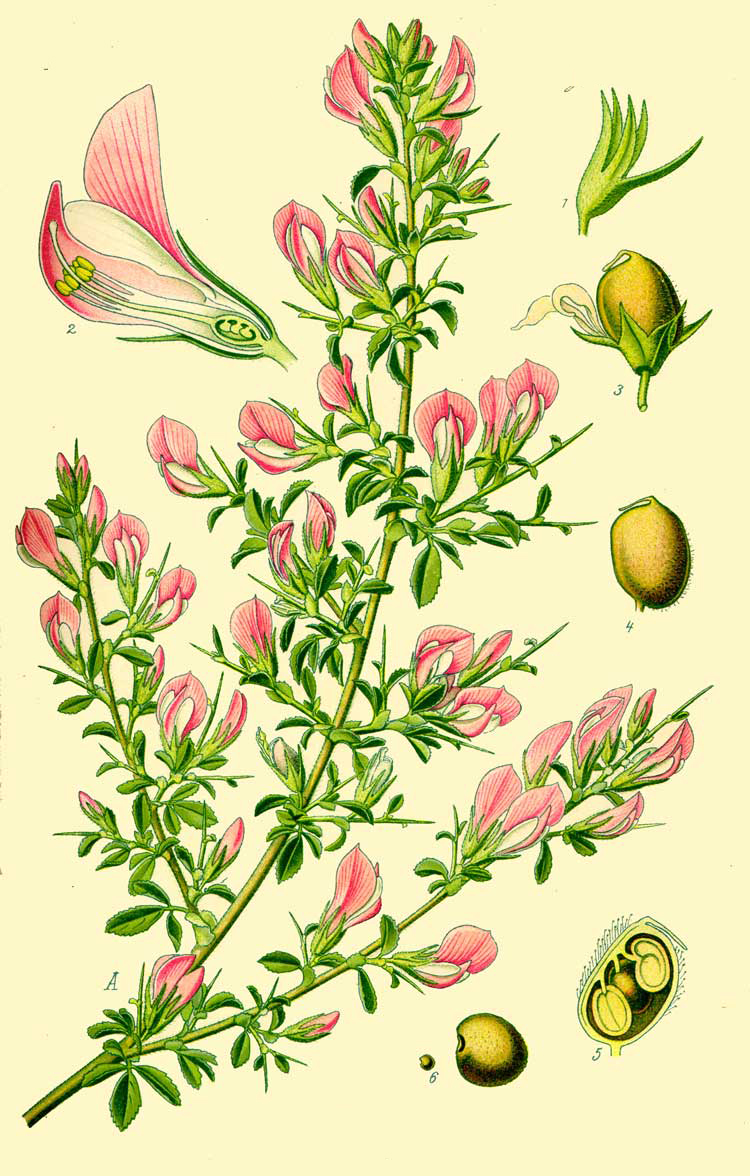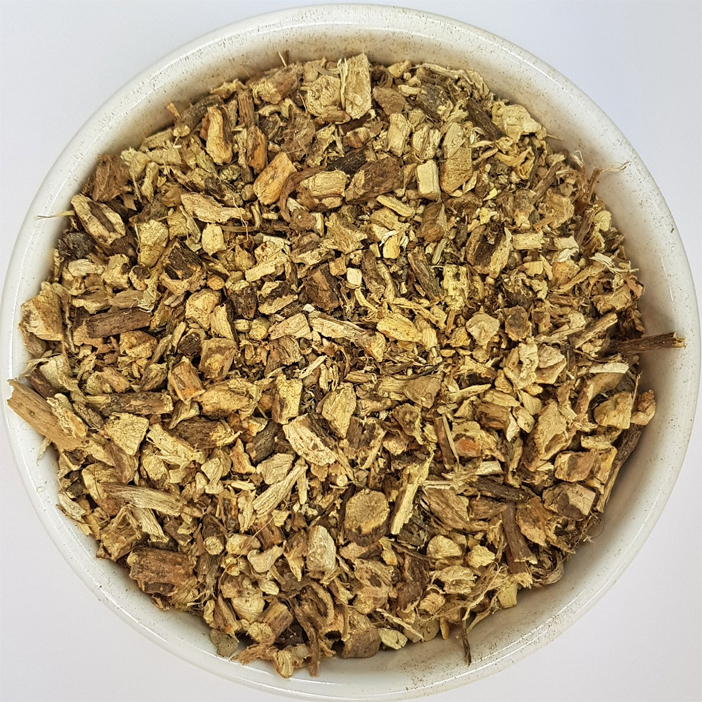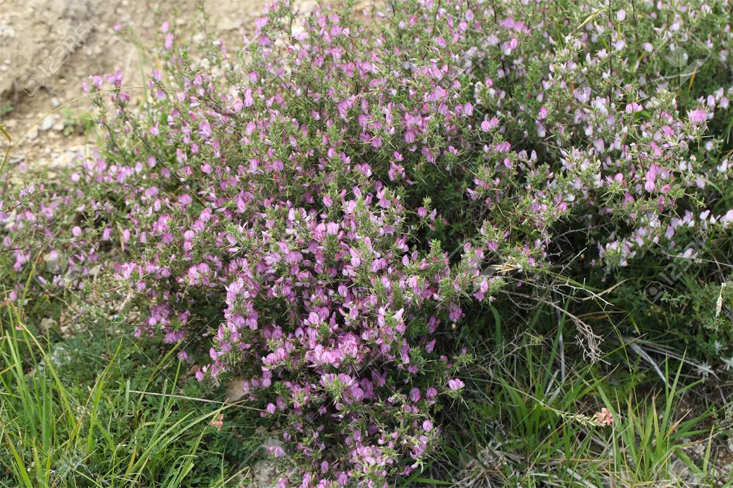| Spiny Restharrow Quick Facts | |
|---|---|
| Name: | Spiny Restharrow |
| Scientific Name: | Ononis spinosa |
| Origin | Africa, Asia and Europe |
| Shapes | Oblong to rhomboid, 8-9 mm, equal to or slightly exserted from persistent calyx, apex beaked |
| Taste | Sweet |
| Health benefits | Rheumatism, dropsy, chronic skin disorders, inflammation of the bladder and kidneys, skin ulcers, eczema, bladder stones, Cystitis, constipation and hemorrhoids |
| Name | Spiny Restharrow |
|---|---|
| Scientific Name | Ononis spinosa |
| Native | Africa (Algeria, Libya, Morocco, Tunisia), Asia (Afghanistan, Iran, Iraq, Palestine, Jordan, Lebanon, Syria, Turkey, Armenia, Azerbaijan, India) and Europe (Denmark, Norway, Sweden, United Kingdom, Austria, Belgium, Czechoslovakia, Germany, Hungary, Netherlands, Poland, Switzerland, Estonia, Lithuania, Moldova, Russian Federation- European part, Albania, Bulgaria, Former Yugoslavia, Greece, Italy, Romania, France, Portugal, Spain) |
| Common Names | Spiny restharrow, Thorny restharrow, Restharrow, spring restharrow, Thorny Ononis, spring restharrow |
| Name in Other Languages | Albanian: Ferrëbukja, kalmuth, kalmuthi me gjemba Aragonese: Bolomaga, camerios, cornicrabas, gatillos, gatuña, grumajas, mielga de Gitano, molomaga, uñas de gato Azerbaijani: Tikanlı paxlakolu Basque: Itxiokorria Bulgarian: Bodliv grŭmotrŭn (бодлив гръмотрън) Catalan: Gavó espinós, adragull, gavó espinós, Ononis campestris Chinese: Hóng máng bǐng huā (红芒柄花) Croatian: Trnoviti zečji trn, Zečji trn Czech: Jehlice trnitá Danish: Krageklo, mark-krageklo Dutch: Kattendoorn, Kruipend stalkruid, Kruipend stalkruid en kattendoorn, Kattedoorn English: Spiny restharrow, Restharrow, Thorny restharrow, spring restharrow Finnish: Piikkiorakko, Ruusuorakko French: Bugrane épineuse, arrête-boeuf, bugrane arrête-boeuf, bugrane épineuse, ononis champêtre, ononis épineux, Arrête-boeuf, Arrête-bœuf German: Dornige Hauhechel, Dorn-Hauhechel, Eindorn, Weiberkrieg Hebrew: Shavrak kotzani, shbrk kutsni (שַׁבְרָק קוֹצָנִי) Hungarian: Tövises iglice Italian: Arrestabue, Bonaga, Ononide spinosa, stancabue, Ononide Limburgish: Kattedoorn Lithuanian: Dygliuotasis dirvenis Macedonian: Grmotrn (Грмотрн), zajački trn (зајачки трн) Norwegian: Vedbeinurt, Vedbeinurt Occitan: Arrest-boéu, besso, bigaròsse, bimago, boumague, escane-baque, escane-boéu Polish: Wilżyna ciernista Portuguese: Gatunha, gatinha, resta-boi, rilha-boi, unha-gata, gatinho, unha-de-gato, unha-gata, unha-gata-transmontana Romanian: Osul iepurelui Russian: Stal’nik kolyuchiy (стальник колючий) Serbian: Trnoviti gladiš (трновити гладиш), Vučiji trn (Вучији трн), Zečji trn (Зечји трн) Slovak: Ihlica tŕnistá, ihlica tŕnitá Slovene: Navadni gladež Spanish: Gatuña, abreojos, balomaca, brumaga, camerio, detienebuey, esbolomaga, gao, gatillas, gatuña, goldarrán, grumagas, hierba de la estranguria, hierba toro, miarcas, mielca de Gitano, molomaga, parabuey, peina de asno, quiebraarados, rumaga, remora, uñas de gato, abrojo, anonis, asnillo, balomada, balomaga, carretón de la vega, cornicrabas, detiene buei, detiene bueyes, espinilla, garduña, gata, gatena, gatillos, gatina, gatita, gatuñas, grumuaca, gurumaca, hijasdeputa, mormaga, tentabuey, uña de gatos, uña gata, uñalgata, uñas de gato, uñas gatas, yerba de la estranguria, yerba que impide el arado, yerba toro Swedish: Busktörne, Åsnetörne, Puktörne, Smalbladigt puktörne, Stallört Turkish: Kayışkıran Upper Sorbian: Kawaty tryčk Welsh: Cas Gan Arddwr, Hwp yr Ychen, Tag yr Aradr Pigog, Tagaradr Pigog |
| Plant Growth Habit | Erect, woody, spiny, nitrogen-fixing, perennial herb or small shrub |
| Plant growth Habit | Erect, woody, spiny, nitrogen-fixing, perennial herb or small shrub |
| Growing Environment | Chalk and limestone grassland, open pine forests, stony hillsides, on dry stony ground, field borders, meadows, pastures, scrub and occasionally in riverbanks, peat areas, waysides, sand dunes |
| Soil | Usually found on well drained chalk or limestone soils but occasionally on heavy calcareous clay soils. It favors somewhat coarse grassland and inclines to be absent from more intensively managed or grazed sites |
| Plant Size | 25 and 70 cm (10 and 28 inches) t |
| Stem | Wiry, branched stem is woody, downy, hairy and nearly always spiny |
| Leaf | Leaves are small, dark green, oval or trefoil, with toothed leaf-like stipules at their base. |
| Flowering season | June – September |
| Flower | Flowers are deep pink and white, with the wings shorter than the hooked keel, and the calyx usually shorter than the pod. |
| Fruit Shape & Size | Oblong to rhomboid, 8-9 mm, equal to or slightly exserted from persistent calyx, apex beaked |
| Seed | Seeds 2 or 3, brown to black, tuberculate |
| Flavor/Aroma | Very sweet, almost unpleasant scent |
| Taste | Sweet |
| Plant Parts Used | Roots, leaves, flowers |
| Season | August – September |
| Other Facts |
|
Plant Description
Spiny Restharrow is an erect, woody, spiny, nitrogen-fixing, perennial herb or small shrub that usually grows between 25 and 70 cm (10 and 28 inches) tall. The plant is found growing in chalk and limestone grassland, open pine forests, stony hillsides, on dry stony ground, field borders, meadows, pastures, scrub and occasionally in riverbanks, peat areas, waysides and sand dunes. The plant usually found on limestone soils or well drained chalk but occasionally on calcareous clay soils. It favors somewhat coarse grassland and inclines intensively managed or grazed sites. The plant has short rhizome and a ligneous taproot that are up to 50 cm long. The upright stems grow out of this are lignified at the base and somewhat hairy. Several short shoots have developed into prickly thorns, but thorn fewer ranges also occur.
Leaves
The plant has small, dark green, serrated, threefold pinnate leaves with toothed leaf-like stipules at their base. The stipules are also serrated. Lower leaflets are pinnate and trifoliate, while the upper ones are tiny and unifoliate along with a long oval shape and dentate edges. Leaves are covered with fine glandulous hairs. The side branches have sharp thorns.
Flowers
The pink or purplish colored outstanding butterfly-shaped flowers are arranged on short shoots in the upper angles between leaves and stem that form comparatively dense grape stalks. The calyx has a visible hairiness. Flowers are generally solitary but sometimes also grow in loose clusters. The heyday of the thorny restharrow commonly takes place from mid-May to early October. The spiny restharrow emits a partly unpleasant, slightly sweet smell at the flowering time.
Fruits
Fertile flower are soft-haired rhomboid to oblong legume about 8-9 mm long, equal or somewhat exserted from persistent calyx and apex beaked. The fruit consists of 2 – 3 rounded, lumpy seeds, black to brown colored and tuberculate.
Health benefits of Restharrow
Restharrow root has been used all over the world for several healing benefits. Historical uses of restharrow root include support for kidney, bladder health and urinary tract. Listed below are some of the popular health benefits of Spiny Restharrow
1. Used as diuretic
Restharrow root is considered as a gentle diuretic. It is still supposed to be an appreciated herb for the bladder, with certain individuals believing restharrow root as a supplement for supporting urinary tract health.
2. For Skin disorders
Traditional remedies occasionally use restharrow for skin cuts. Latest research has showed that the herb may certainly offer assured calming benefits for the skin.
3. For Kidney Stones
Restharrow has been long publicized in traditional medicine as a cure for kidney stones. Though there’s a lack of research, many who have suffered from kidney stones have affirmed positively about the herb.
4. Protection against Disease
Phytochemicals found in restharrow root include the flavonoid ononin and the polyphenols tannin and triterpenes. These compounds have reputation for protecting against aging and encouraging good health.
5. Liquid retention
The plant’s capability to increase urine may help eliminate fluid collected within the body that helps to recover the signs of abdominal dropsy, gout, dropsy and arthritis. Caution: Treatment for fluid retention should not be achieved when it is due to kidney or heart failure.
6. Dermatitis
The cleansing ability of Spiny Restharrow is used to treat dermatitis caused due to toxins which appear on the skin. (Make an infusion along with a teaspoon of dried root (34 gr) per cup of water. Take two or three cups per day)
7. Itchy skin
Itchy skin typically reacts to the gathering of toxins within the body. Cures with restharrow plant, help remove the toxins that cause itch. (Infusion made from teaspoon of dried root (34 gr) per cup of water is taken two or three cups per day)
Traditional uses and benefits of Spiny Restharrow
- Flowers, leaves and roots are antitussive, lithontripic, aperient and diuretic.
- An infusion is used in the treatment of rheumatism, dropsy, chronic skin disorders and inflammation of the bladder and kidneys.
- Young shoots are mostly used either fresh or even dried.
- Barks are used to prepare cough mixture.
- It is helpful in the treatment of skin ulcers and eczema.
- Stem and leaf decoction acts as a good skin toner.
- Spiny Restharrow is a good herbal treatment for kidney disorders and helps in dissolving the Kidney Stones.
- It prevents and dissolves bladder stones and controls Cystitis.
- It reduces muscle pain.
- It is extensively used in treating Joint inflammation and curbs joint Pain, gout and rheumatism.
- It is helpful in curing Edema.
- Decoction of restharrow was used for skin problems, chronic constipation, hemorrhoids and infections of the anus.
- Plant was used to treat genital warts, liver discomfort and spleen diseases, or to improve urine flow.
- The herb is used for toothache.
Culinary Uses
- Young shoots are consumed after cooking.
- It can also be used as a potherb.
- Roots are munched for their licorice-like flavor.
- Flowers are used for the decoration of salads.
Precautions
- Avoid use during pregnancy, breast feeding, edema and water retention.
- Do not use if it has been confirmed that there are stones in the kidneys or in the gallbladder.
- Do not uses in severe infections or with symptoms like dizziness, pain when urinating, blood in the urine etc.
- Children under 12 years are not recommended to use.
- Usage of this plant boosts the production of fluids, so it should not be used in heart problems, hypertension or severe kidney disease.
References:
https://www.itis.gov/servlet/SingleRpt/SingleRpt?search_topic=TSN&search_value=26813#null
https://npgsweb.ars-grin.gov/gringlobal/taxon/taxonomydetail?id=313900
https://pfaf.org/user/Plant.aspx?LatinName=Ononis+spinosa
http://www.theplantlist.org/tpl1.1/record/ild-29429
https://gd.eppo.int/taxon/ONOSP
https://en.wikipedia.org/wiki/Ononis_spinosa
https://plants.usda.gov/home/plantProfile?symbol=ONSP



